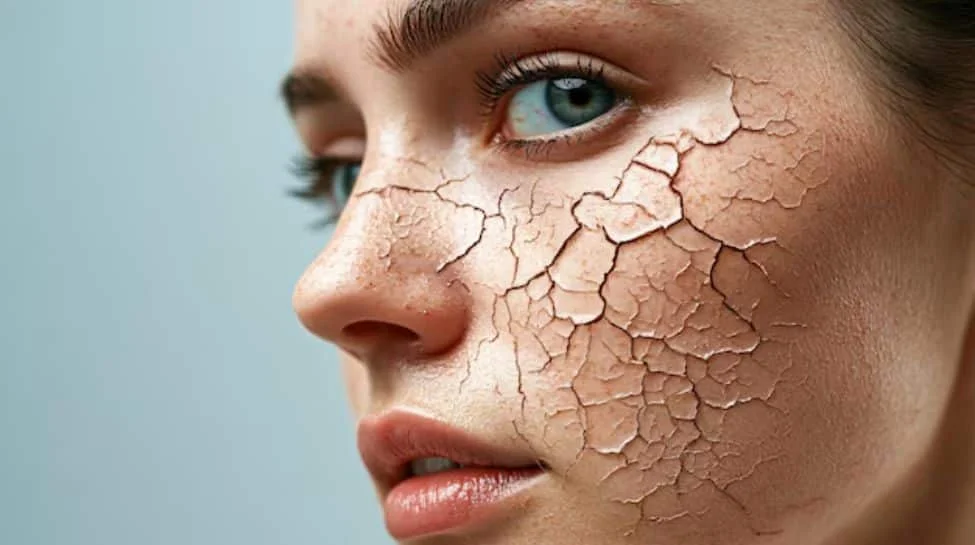Dehydrated skin is a common but often misunderstood condition, different from simply having “dry skin.” While dry skin lacks oil, dehydrated skin lacks water, leading to an array of symptoms that can affect all skin types, including oily or combination skin. Knowing the signs of dehydrated skin and the underlying causes can help you address it effectively, restoring your skin’s natural balance and glow.
Understanding Dehydrated Skin vs. Dry Skin
While “dry” and “dehydrated” are often used interchangeably, they refer to different skin concerns:
Dry Skin: A skin type that does not produce enough sebum (natural oils). It tends to be flaky, itchy, and feels tight all year round.
Dehydrated Skin: A condition that refers to a lack of water in the skin. It can happen to anyone, regardless of skin type, and can be temporary if addressed properly.
Dehydrated skin can be caused by various lifestyle, environmental, or dietary factors, and recognizing it early on can prevent further issues.
Signs of Dehydrated Skin
If you experience the following symptoms, your skin might be dehydrated:
1. Tightness and Discomfort
Dehydrated skin often feels tight and uncomfortable, especially after cleansing. This sensation may be felt throughout the day, particularly in drier, colder environments or if you’re frequently exposed to air conditioning or heating.
2. Increased Sensitivity
Dehydrated skin can weaken your skin barrier, making it more sensitive to environmental factors, skincare products, and even stress. If you notice that your skin reacts more than usual to certain products or weather changes, dehydration may be the culprit.
3. Dullness and Lack of Radiance
Healthy skin is known for its natural radiance and glow. Dehydrated skin, however, tends to look lackluster and lifeless. This dull appearance happens because dehydration slows down the skin’s renewal process, leading to a build-up of dead skin cells on the surface.
4. Fine Lines and Wrinkles
When your skin is dehydrated, it can emphasize fine lines, especially around the eyes and mouth. These “dehydration lines” often disappear once your skin is adequately hydrated, unlike wrinkles caused by aging.
5. Dark Circles and Puffy Eyes
Dehydration affects the skin around the eyes by causing puffiness and accentuating dark circles. Since the skin here is thin and sensitive, it shows dehydration signs more readily.
6. Rough Texture and Flakiness
Although dehydrated skin is not the same as dry skin, it can exhibit roughness and flakiness. If your skin texture feels uneven and you notice small, flaky patches, these may be signs of dehydration.
7. Increased Oiliness and Breakouts
Dehydrated skin can sometimes trick the skin into producing more oil to compensate for the lack of water. This overproduction of oil, combined with a weakened skin barrier, can lead to clogged pores and breakouts, especially in people with combination or oily skin types.
Causes of Dehydrated Skin
The underlying factors of skin dehydration vary widely, but the most common ones include:
Environmental Conditions: Exposure to extreme weather, low humidity, and pollution can sap moisture from the skin.
Hot Showers: Long, hot showers may feel relaxing but can strip away essential moisture from the skin’s outer layer.
Improper Skincare Routine: Over-washing, excessive exfoliating, and skipping moisturizer can disturb the skin’s moisture barrier, leading to dehydration.
Poor Diet: Low water intake, excess caffeine or alcohol, and nutrient deficiencies can contribute to skin dehydration.
Lifestyle Factors: Stress, lack of sleep, and exposure to air-conditioned or heated rooms can dehydrate skin.
How to Test for Dehydrated Skin
The Pinch Test is a quick way to check for skin dehydration:
Lightly pinch a small section of your cheek or back of your hand.
If the skin bounces back quickly, it’s hydrated. If it takes a moment to return or stays wrinkled, you likely have dehydrated skin.
Solutions for Dehydrated Skin
Once you identify the signs of dehydration, taking steps to restore moisture levels is essential. Here’s how to help your skin stay hydrated:
1. Hydrate From the Inside Out
Drink at least 8 glasses of water daily, and eat water-rich foods like fruits and vegetables. Avoid excessive caffeine and alcohol, which can have a drying effect.
2. Choose the Right Skincare Products
Use a hydrating cleanser that’s gentle and free of harsh surfactants.
Apply hyaluronic acid serum to draw water into your skin. Follow with a moisturizer that contains humectants (like glycerin or hyaluronic acid), emollients (such as squalane), and occlusives (like shea butter) to lock in moisture.
Avoid alcohol-based products that may strip away moisture.
3. Avoid Over-Exfoliating
Limit exfoliation to once or twice a week to prevent damaging the skin barrier. Opt for gentle, hydrating exfoliants rather than harsh scrubs.
4. Add a Humidifier
Using a humidifier, especially during dry winter months or in air-conditioned spaces, can help maintain skin moisture levels.
5. Sun Protection
Use sunscreen daily, even when indoors, as UV rays can weaken the skin’s moisture barrier and exacerbate dehydration.
6. Reevaluate Your Diet
Incorporate foods rich in omega-3 fatty acids (like salmon, chia seeds, and walnuts) and vitamins A, C, and E, which can support skin health and hydration.
(This article is intended for your general information only. Zee News does not vouch for its accuracy or reliability.)




